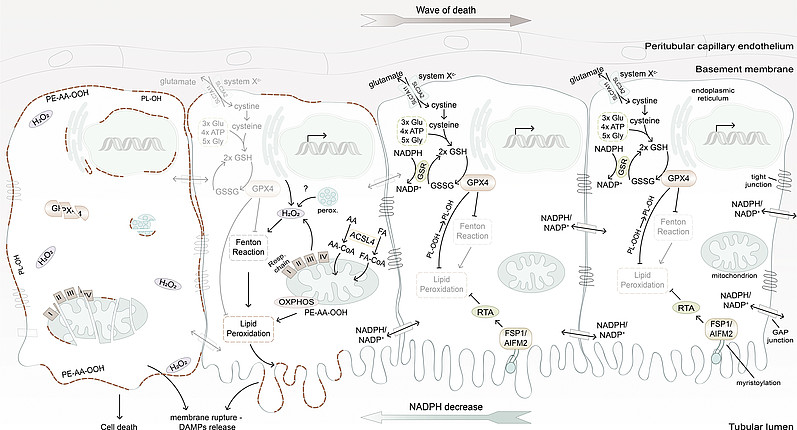Sie befinden sich hier
Inhalt
Acute tubular necrosis causes a loss of renal function and clinically presents as acute kidney injury (AKI). The death of renal tubular cells plays a key role in AKI and its transition to chronic kidney disease (CKD). Recent studies have shown that cell death pathways associated with the loss of plasma membrane integrity, such as necroptosis and ferroptosis, are involved in this process. Due to the rupture of the cell membrane, cells undergoing necroptosis or ferroptosis can cause an inflammatory response, which is referred to as necroinflammation. Importantly, the inflammatory response might differ between those pathways, thereby influencing the tissue damage and/or repair.
To investigate the involved cell death pathways is therefore crucial to gain a better understanding on how to successfully treat the condition and prevent further deterioration of the disease. Although mechanisms of ferroptosis and necroptosis have recently been studied in detail, the cell death propagation during tubular necrosis, although described morphologically, remains poorly understood. Therefore, we are investigating the molecular details of this phenomenon to gain further insight into the `switch´ between tissue loss and tissue repair to improve therapeutical decisions and outcomes.


